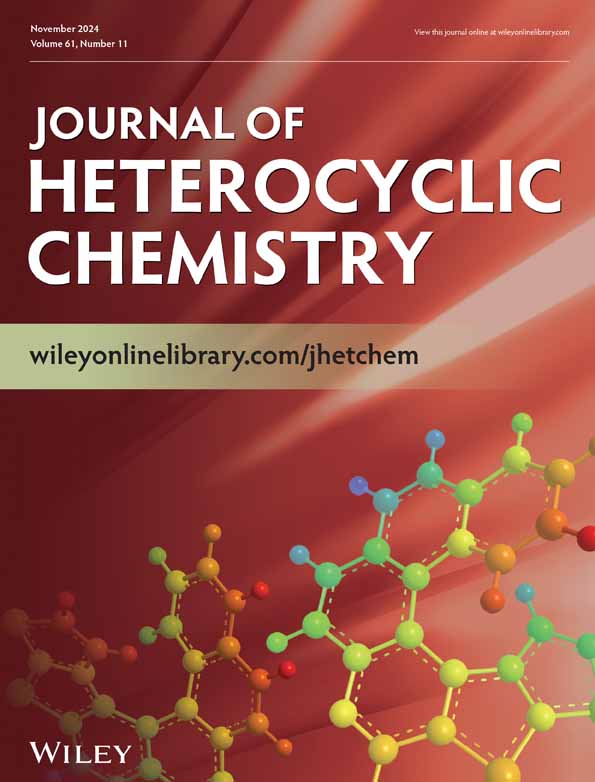N-N偶联一锅直接电化学合成2h -吲哚
IF 2
3区 化学
Q2 CHEMISTRY, ORGANIC
引用次数: 0
摘要
本文介绍了在乙氧基溶剂中,利用2-叠氮苯甲醛和苯胺的相互作用,通过N-N键偶联合成2h -吲哚唑衍生物的环保方法。以六氟磷酸四丁基铵(Bu4NPF6)为支撑电解质,在室温下的未分裂电池中进行恒流电合成。该协议的诱人品质包括清洁合成,使用电力而不是化学试剂,以及原子经济性。本文章由计算机程序翻译,如有差异,请以英文原文为准。
A Convenient Electrochemical One-Pot Direct Synthesis of 2H-Indazoles via N–N Coupling
This article describes an environmentally friendly synthesis of a 2H-indazole derivative via N–N bond coupling using the interaction of 2-azidobenzaldehyde and aniline in EtOH solvent. Constant Current electrosynthesis was performed in an undivided cell at ambient temperature with tetrabutylammonium hexafluorophosphate (Bu4NPF6) as a supporting electrolyte. The protocol's enticing qualities include clean synthesis, the use of electricity rather than chemical reagents, and atom economy.
求助全文
通过发布文献求助,成功后即可免费获取论文全文。
去求助
来源期刊
CiteScore
5.20
自引率
4.20%
发文量
177
审稿时长
3.9 months
期刊介绍:
The Journal of Heterocyclic Chemistry is interested in publishing research on all aspects of heterocyclic chemistry, especially development and application of efficient synthetic methodologies and strategies for the synthesis of various heterocyclic compounds. In addition, Journal of Heterocyclic Chemistry promotes research in other areas that contribute to heterocyclic synthesis/application, such as synthesis design, reaction techniques, flow chemistry and continuous processing, multiphase catalysis, green chemistry, catalyst immobilization and recycling.

 求助内容:
求助内容: 应助结果提醒方式:
应助结果提醒方式:


